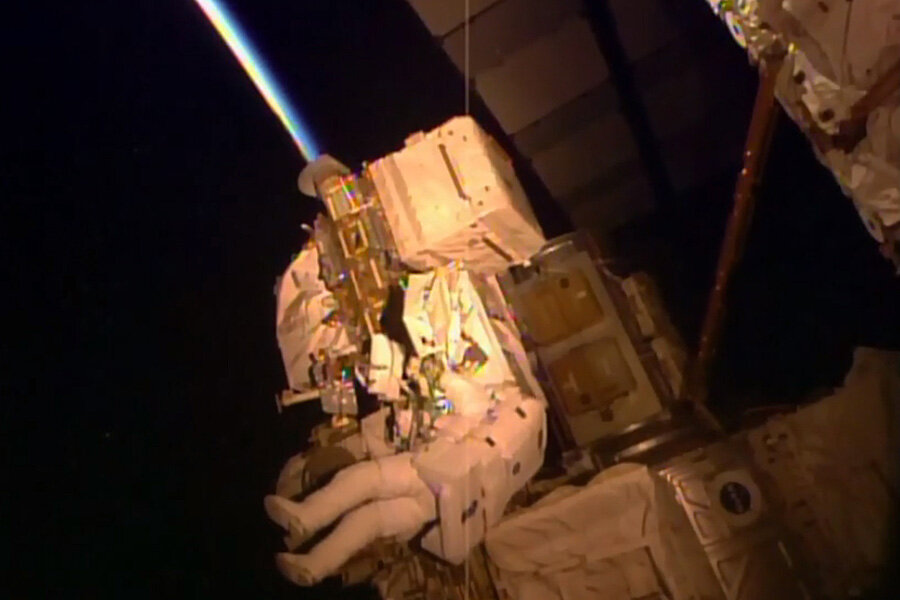Space station astronauts' latest challenge: How to park space taxis
Loading...
Space station commander Scott Kelly and flight engineer Kjell Lindgren conducted their first ever spacewalk Wednesday (but the US 32nd), a six and a half hour mission to conduct routine maintenance and prepare the station for commercial space taxi docking.
NASA originally planned to complete construction of two “berthing slips” to allow parking of Boeing and SpaceX commercial space taxis by the end of the year. However, one docking adapter was lost in June, which could take up to 14 months to replace.
Station operations integration manager, Kenneth Todd, admitted “we haven’t been able to do everything we hoped we would.”
Boeing and SpaceX won’t begin crewed capsule testing until 2017, so NASA still believes the docking ports will be ready in time as the electric cable installation should be completed in early 2016.
Mr. Kelly and Mr. Lindgren also began installation of a thermal cover on the “Alpha Magnetic Spectrometer particle detector, a multinational experiment intended to shed light on dark matter, cosmic rays and other high-energy phenomena,” a measure scientists believe will extend the instrument’s life.
According to CNN, Kelly and Lindgren will perform a second spacewalk November 6, “two days after the 15-year anniversary of continuous human presence outside the space station.”
NASA discontinued it's own space shuttle in 2011, despite objections from many in the space program. Without a shuttle of its own, NASA has relied on the Russian space program to ferry astronauts to and from the space station. In September 2014, the space agency cut a $6.8 billion deal with SpaceX and Boeing to serve as NASA's space taxi service.
Outsourcing NASA’s short-range transportation needs to private industry frees space agency resources up to pioneer more ambitious projects, astrophysicist Jonathan McDowell of the Harvard-Smithsonian Center for Astrophysics in Cambridge, Mass., told The Christian Science Monitor last year.
"It makes sense to me that NASA’s role should be at the frontier. Trucking astronauts and their food and supplies and so on is no longer the frontier,” he said. “NASA astronauts shouldn’t be truck drivers. That’s not what they’re for. They’re for being the first people on Mars, or on an asteroid.”








